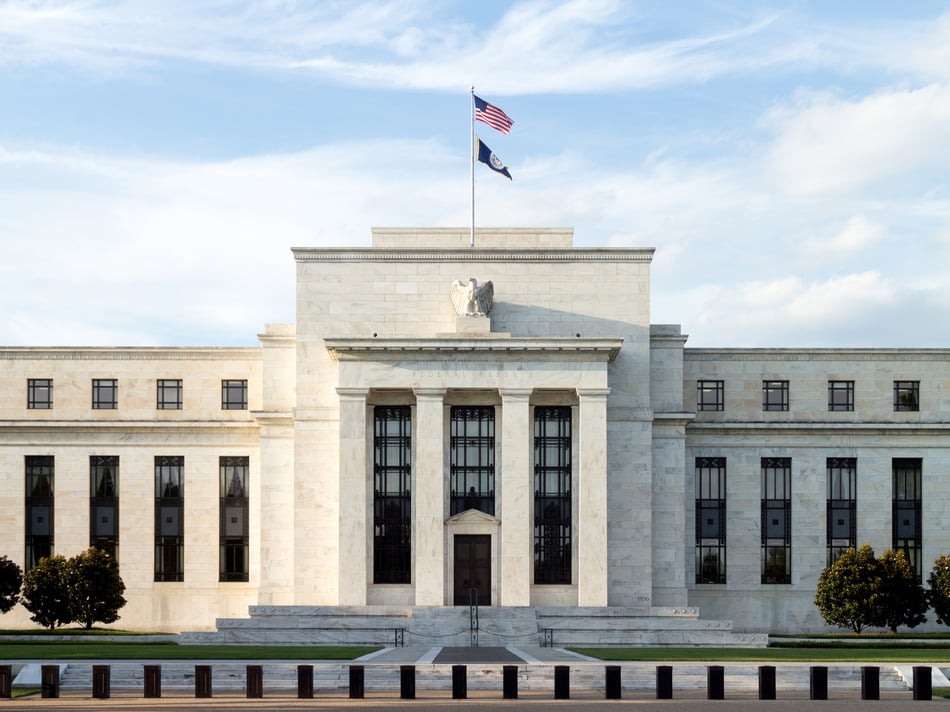

The Federal Reserve's decisions about interest rates have been very important for the markets lately. In 2022, markets reacted when the Fed raised rates, and again last year when investors thought rates would go down. Now in 2025, the Fed is keeping rates steady even though there are worries about tariffs, how consumers are feeling, and whether the economy might slow down. Let's look at why the Fed isn't changing rates and what this means for people investing for the long-term.
The Fed is keeping interest rates the same for now
The Fed has two main jobs from Congress: keep unemployment low and keep prices stable. This is why they raised interest rates in 2022 when prices were going up too fast and started lowering rates last year when inflation started to calm down. At the start of 2024, people worried that fighting inflation would hurt the economy, but thankfully that didn't happen.
Now the Fed faces more uncertainty. In their latest report from March, they said the economy might grow more slowly - only 1.7% in 2025, down from 2.5% in 2024. The last time growth was this low was in 2022 when prices were rising quickly.
The Fed expects both higher prices and more unemployment this year. Even with these concerns, they haven't changed their plans for interest rates. They're trying to be careful and balanced about managing different economic risks.
One big worry is that new tariffs might make some things more expensive. But the Fed sees a difference between temporary price increases on specific items (like when washing machine prices went up in 2018) and lasting inflation that affects prices across the whole economy.
That's why the Fed isn't rushing to react to trade policy changes. However, if tariffs become bigger and last longer, they could push prices higher for everyone.
Right now, the three main ways we measure inflation show prices are still rising faster than the Fed's target of 2.0%. This gap helps explain why financial markets have been more worried than the Fed lately.
The Fed also sees some good signs in the economy. Fed Chair Jerome Powell pointed out that unemployment is low, wages are going up, and there are plenty of job openings. He also noted that how consumers feel doesn't always match how much they actually spend - right now people aren't feeling confident, but they're still shopping regularly.
Powell explained that the economic data can be tricky to understand. For example, people might buy more things now if they think prices will go up later due to tariffs. He also mentioned that while higher grocery prices are hard on families, they tell us more about past inflation than future inflation.
The Fed still plans to lower rates twice in 2025
What's next? While the Fed didn't change rates in March, they still expect to lower rates twice this year. Market pundits also think the Fed will cut rates two or three more times in 2025, showing they believe inflation will improve despite uncertainty about tariffs.
These predictions can change quickly though. Last year, investors expected seven or eight rate cuts, but the Fed only cut rates three times. Even the Fed's own predictions change every few months.
The Fed is also planning to slow down its program of selling bonds, which is another way to support the economy. This means they'll buy more government bonds when their old ones mature, which can help keep interest rates lower.
Since it's hard to predict exactly what the Fed will do, it's better not to focus on any single decision. What matters more for long-term investors is the overall direction of interest rates.
Throughout history, when the Fed lowers rates, it usually helps markets and the economy by making it easier for businesses and people to borrow money. The exact number of rate cuts might affect timing, but not the bigger picture of where rates are headed.
Keeping too much money in cash can hurt your long-term goals
While interest rates are high, some people might want to keep their money in cash because it feels safe. This is natural when markets are jumpy and news headlines are worrying. But keeping too much in cash can work against you. Markets often recover when people least expect it, and missing out on growth can hurt your financial plans.
Even though cash accounts have paid better interest lately, many still don't keep up with inflation. This means the purchasing power of your cash savings can slowly decrease, even if your account balance stays the same. The chart shows that after accounting for inflation, many cash accounts actually lose money.
While some savings accounts might offer better rates, cash isn't the best way to grow your money or generate income over the long term. Even with current worries about a recession, tariffs, and uncertain Fed policy, it's important to think long-term. Market ups and downs are normal, and we'll likely have more clarity about the situation in the coming months.
The bottom line? The Fed is taking a balanced approach despite various economic concerns. Long-term investors should try to do the same. History shows that not reacting to short-term news is the best way to reach your financial goals.




